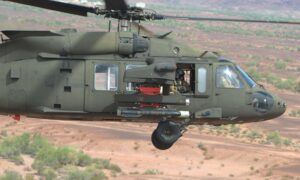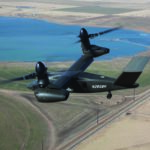
YUMA, Arizona —From rolling out a new modular effects launcher and XM915 Gatling gun prototypes to nearly tripling its network range capability, the Army has achieved around 30 new Future Vertical Lift technology “firsts” at this fall’s Project Convergence demonstration as the service looks to prove out its future fleet’s contribution to multi-domain operations. During a recent visit to Yuma Proving Ground (YPG) in Arizona, programs officials detailed FVL’s role in five of the seven use cases at Project Convergence…

 By
By 











